
views
How to Sort Your Laundry

Keep your dirty laundry in hampers according to your preference. Buy hampers or baskets to keep piles separated as you use your items, or use one main hamper and separate your laundry right before you wash it. How you choose to store your unwashed laundry will likely depend on how much space you have and if you have to leave your home in order to do your laundry. Hampers come in various styles. Some have wheels or handles to make transportation easier; consider one of these if you will be moving yours around. Hampers are also made from different materials. Choose a cloth one that folds up to save on storage space. Plastic ones often have handles that make them easy to carry; while wicker ones are often kept stationary and are more decorative.
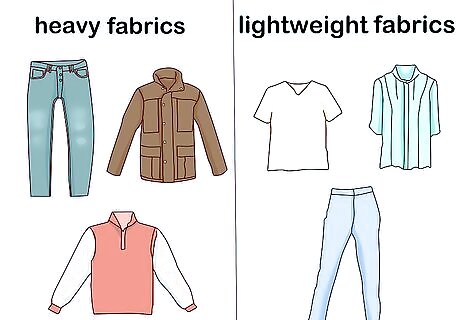
Create piles of similar fabrics. It's wise to separate your fabrics into heavy fabrics and lightweight or thin fabrics. This way, you can choose the wash cycle that is appropriate for the type of fabric of your load. For example, create a heavy fabric pile that includes your jeans, heavy cotton sweatshirts or pants, jackets, and heavy workout clothing. Create a different pile for lighter T-shirts, blouses, and thin pants. Maintain a separate pile for delicates like lingerie, pantyhose, and silks, and other piles for towels and bed linens.
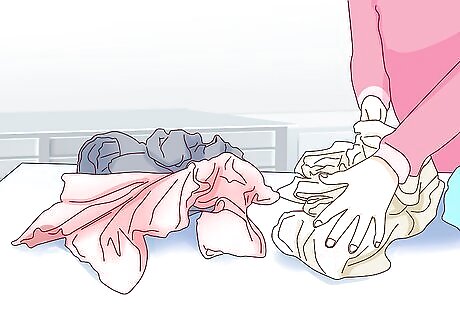
Separate your clothes into whites, lights, and darks. In addition to separating your laundry by fabric, you should also separate it by color to avoid having dark colors bleed onto whites or lighter colors. Create a whites pile that includes your white T-shirts, socks, underwear, and any other sturdy white clothing items. Create a separate pile of lights, which includes pastels like light blues and greens, yellows, and pinks. Keep a separate pile of your dark clothing: anything black, grey, navy blue, red, or dark purple would go into this pile.
How to Treat Stains and Add Detergent
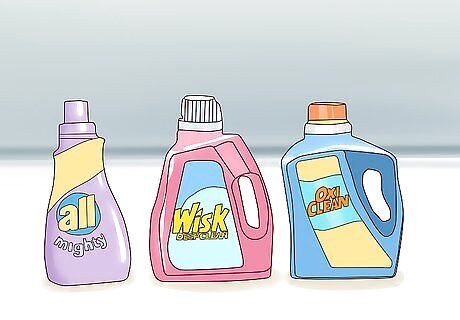
Buy detergent designed for your type of washer. Some detergents are designed for traditional top-loading washers, some are for high-efficiency or front-loading washers, and some can be used for both. Find out which type of machine you have and buy detergent that you like for your model. If you have sensitive skin or are prone to allergies, buy detergent that is labeled natural, fragrance-free, or free and clear.
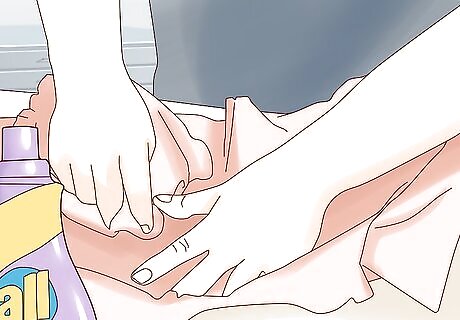
Treat stains with stain remover or detergent immediately. You'll have the most success removing a stain if you treat it as soon as it occurs. As soon as you're able to, apply a stain remover or some liquid detergent to the stain and gently rub it in. Allow the product to remain on the stain for at least 5 minutes before washing the item. You can also treat stains by allowing them to soak in cold water for 30 minutes before washing them. Use a large container, sink, or the soak setting on your machine to do this.
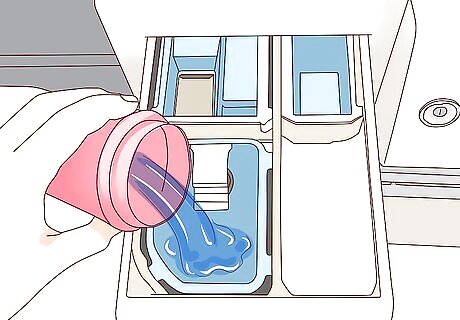
Add detergent to the sliding drawer on a front-loading machine. High-efficiency and front-loading machines will most likely have a small sliding drawer where you add detergent any time before starting the cycle, and the machine will automatically dispense the detergent as the cycle progresses. Read the instruction booklet of your machine if you cannot locate the sliding drawer for detergent on your machine.
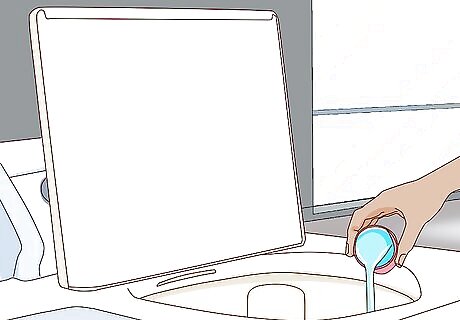
Add detergent to the tub of a top-loading machine. Top-loading washers may require you to fill the tub with water first, add the detergent into the tub, then add your laundry last. Read the instructions inside the lid of your machine to see exactly how to add your detergent.
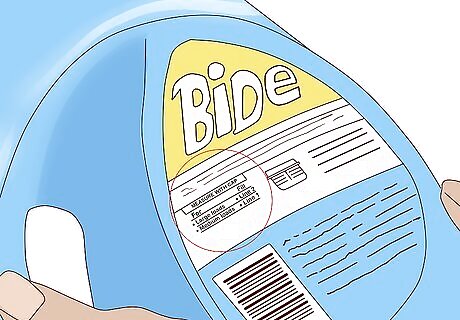
Add the right amount of detergent according to package instructions. Read your detergent instructions to see how much detergent to add. Different detergents will require you to add different amounts, and it's important to follow the instructions exactly to avoid adding too much detergent. Adding too much detergent can cause a soapy residue to remain on your clothes after they are rinsed.

Add bleach to your whites to keep them bright. Locate the section in your washer for adding bleach. It should be near the area where you add detergent in a front-loading washer, and on one of the sides at the top of the tub of a top-loading washer. Read the instructions on your bleach to see how much to add for the amount of laundry that you are washing. Some non-chlorinated bleaches are marked color-safe, therefore you can use them with colors that could use some extra brightening.

Use liquid fabric softener if you'd like extra soft clothes. If your clothes sometimes come out of the laundry stiff and rough, consider using liquid fabric softener with your load. This is especially helpful if the water you use if hard and chemically treated.
How to Choose Your Wash Cycle and Temperature
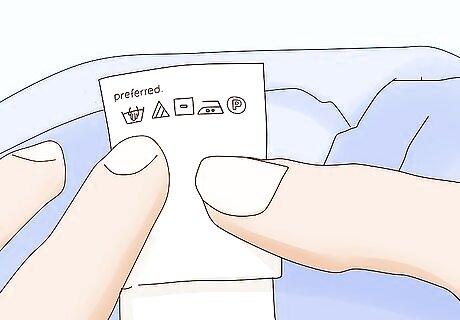
Read the care tags on your clothing. You may have some items that require certain cycle or temperature requirements; it's always wise to read the tag if you're washing something for the first time or can't remember what its tag says.
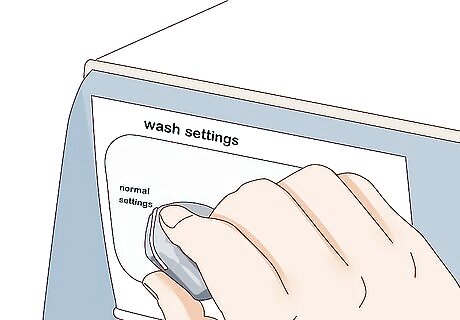
Use the normal setting for sturdy fabrics. The normal or regular setting on a washer usually means both the wash and rinse cycles spin fast. These settings are ideal for fabrics that are sturdy, like jeans, sweatshirts, and towels. The normal or regular settings also work well for clothes that are very dirty; just be careful that they are not delicate items with fine fabric or embellishments. Some washers also have a heavy-duty setting; use this only for sturdy fabrics that are very dirty.
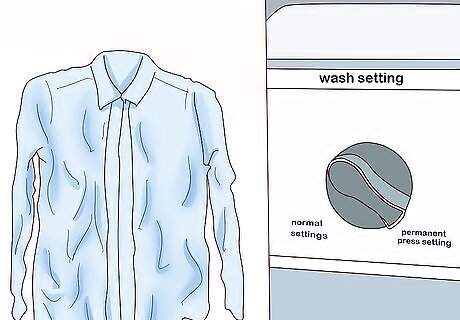
Choose the permanent press setting for clothes that are prone to wrinkling. Some fabrics in blouses and pants, like linen and rayon, become wrinkled easily. Choose the permanent press setting on your washer, which will have a slower spin cycle at the end, to help these items stay wrinkle-free when you wash them.
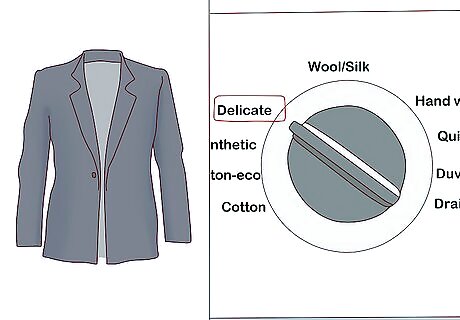
Pick the delicate cycle for fine fabrics or embellishments. The delicate cycle on your washer means the cycle will spin slowly for both wash and rinse, and is designed for fine fabrics like lingerie, pantyhose, or items that have beads, sequins, embroidery, or other delicate embellishments. Certain fabrics like many silks and woolen items, should not be placed in a washer at all and should be hand-washed or dry-cleaned. Be sure to read the tags on your laundry items before placing them in the washing machine.
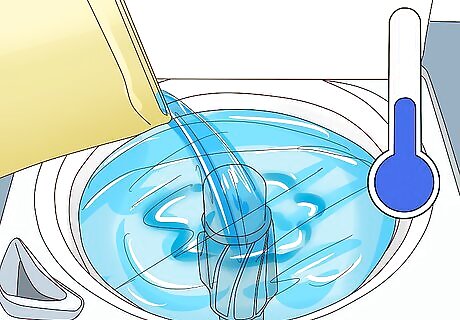
Use cold water most of the time. Most detergents are actually now designed to work best using cold water. In addition, most fabrics last longer if they are not exposed to heat. You can save money and energy by washing your clothes in cold water as opposed to warm or hot. Shrinkable fabrics like cotton should always be washed in cold water and should be dried on a low-heat setting. Some people become concerned that germs will not be killed in cold water. However, your detergent does work on eliminating germs, as does the heat from the dryer if you dry your laundry on any heat setting, even low-heat.

Choose hot water only for very dirty laundry. If you're washing pillowcases and sheets used by a sick person, or muddy outdoor clothes or uniforms, use hot water if you wish. Hot water will fade colors over time, so you're better off not using it more often than absolutely necessary. Avoid using hot water on stained clothes or brand new colored clothing. Hot water can cause stains to set and colors to bleed.
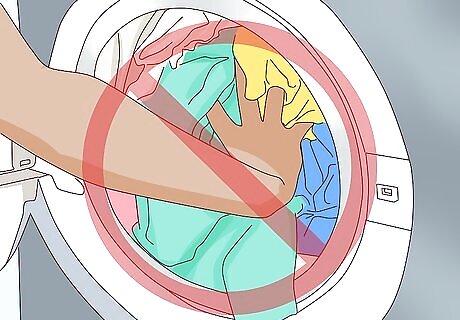
Don't overfill the machine when you add your load. Most machines have instructions on filling or a fill-line right on the machine that you are not to exceed when putting items inside. Be sure not to cram more laundry in the machine than is recommended for your model. Overfilling your machine can cause your laundry to not clean properly, and over time, it can cause your machine to break.
How to Dry Your Laundry

Remove lint from the lint trap before drying each load. Find the lint trap on your dryer and check it for lint every time you use your dryer before turning it on. Slide the trap out of its position, and run your fingers over the lint to gather it up, then throw the lint in a trash can. Not removing lint before using a dryer can cause your dryer to catch on fire.
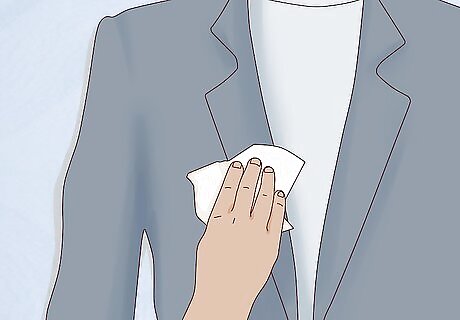
Use dryer sheets for softer, static-free clothes. Dryer sheets can help reduce static on clothes and can make them softer after a wash. Choose sheets that have a scent that you like, or fragrance-free ones if you have chemical sensitivities.

Choose a regular setting for jeans, sweatshirts, and towels. Sturdier fabrics can withstand the heat and fast tumble of a regular dryer setting. In addition, the thicker materials may not become fully dry on lower settings. If you are concerned about certain items shrinking or fading, use a lower heat setting or air-dry the item.
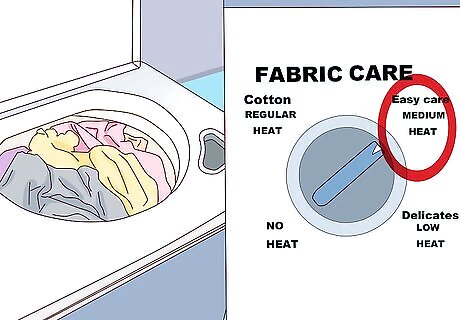
Use permanent press for most of your clothes and sheets. Permanent press uses medium heat but has a slower spin toward the end to reduce wrinkles that commonly happen on items when they are dried in the dryer. Choose this setting to get your clothes and sheets fully dry without getting them wrinkled. Some dryers may call this setting by other names such as wrinkle-free, wrinkle-resistant, or fast/slow.
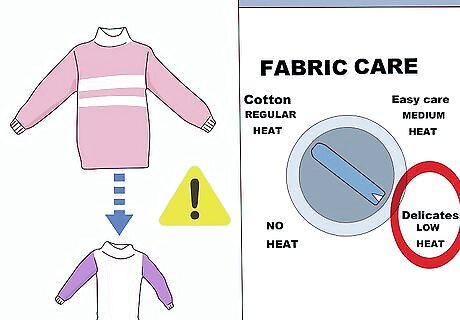
Dry shrink-prone materials on delicate or tumble-dry. The delicate setting uses low heat and a slower spin, and is ideal for items that may shrink or that could be easily damaged. Tumble-dry doesn't use any heat and should be used for items that are extremely delicate or likely to shrink.
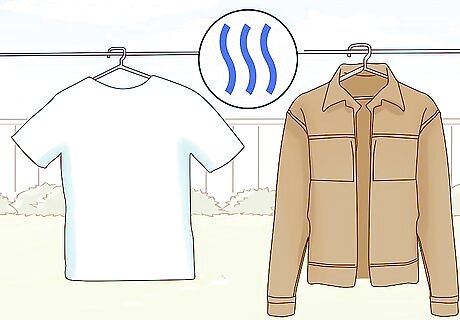
Air-dry items to make them last longer. You can hang any item up on a line to dry if you want to lengthen its life-span. Simply buy some clothespins or hangers to hang your items outside or inside. Alternatively, you can dry items by laying them flat on a towel, or using a drying rack. This helps reduce dry-lines or bumps that can occur on the shoulders of shirts when they are hung to dry.
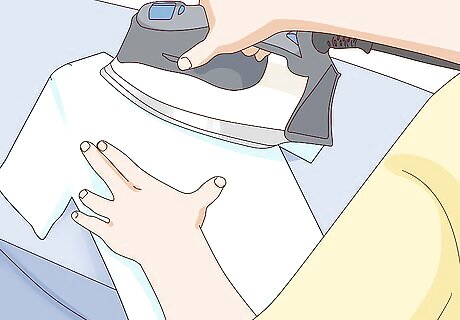
Iron your laundry as needed and put it away. If you have items that become wrinkled in your laundry, use an iron and ironing board to remove the wrinkles. Be sure to read the care tag on your wrinkled item to see which heat setting to use, and set your iron to the correct temperature accordingly. Put your laundry according to your preference when you are finished doing your laundry. Either fold it up and put it in drawers, or hang it in a closet, depending on the space you have at home. EXPERT TIP Ashley Moon, MA Ashley Moon, MA Professional Organizer Ashley Moon is the Founder and CEO of Creatively Neat, a virtual organizing and life coaching business based in Los Angeles, California. In addition to helping people organize their best life, she has a fabulous team of organizers ready to de-clutter your home or business. Ashley hosts workshops and speaking engagements at various venues and festivals. She has trained with Coach Approach and Heart Core for organizing and business coaching respectively. She has an MA in Human Development and Social Change from Pacific Oaks College. Ashley Moon, MA Ashley Moon, MA Professional Organizer Use helpful tools to deal with laundry. If you dislike wrestling with hangers and tangled piles of clothes, use handy hooks on the wall or door, vented baskets, and modular shelves to neatly file tops and bottoms away post-laundry. Choose the method easiest for you. Also, group items by frequency of use as you go.


















Comments
0 comment